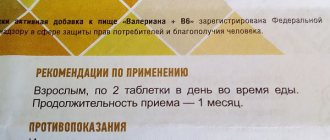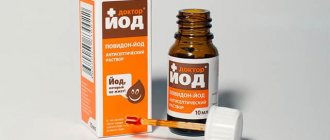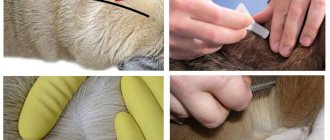One of the important microelements, the balance of which is important for maintaining normal human life, is iodine. Its deficiency - iodine deficiency, as well as an excess of iodine in the body, lead to metabolic and hormonal imbalances, which leads to the development of such dangerous pathologies as: infantile cretinism and endemic cretinism in adults, hypo- and hyperthyroidism, as well as nodular and diffuse goiters .
Aggressive marketing of pharmaceutical drugs has led to the fact that people began to take iodine-containing products and products indiscriminately and indiscriminately. What happens if you drink iodine? Is iodine poisoning dangerous and what are its consequences? How to recognize excess iodine in the body, and how to remove iodine from the body?
Ways to use iodine
Inhalations with iodine are very helpful for diseases of the upper respiratory tract. Fill the kettle a quarter full with water, let it boil, drop 5 drops of iodine into it. Make a spout out of thick cardboard and place it on the spout of the teapot. Breathe for about twenty-two times a day.
For diseases of the throat and oral cavity, prepare a rinse solution and add the following to a glass of warm water:
- Soda-teaspoon;
- Salt - teaspoon;
- A few drops of iodine.
You can rinse with this solution frequently, eight times a day.
Everyone knows the disinfectant effect of iodine, but it is also an anti-inflammatory and irritant.
How to use a rinse containing salt, soda, iodine?
The tandem of these substances is truly unique. Thus, there is no need to even remind about the antiseptic properties of iodine. Not only is salt capable of “pulling out” and removing some pathogenic microorganisms from the body, it also affects the pH of the mucous membrane of the mouth and throat, which creates unfavorable conditions for the life of bacteria and viruses. Soda also affects the pH of the oral cavity and pharyngeal mucosa.
Most often, this solution is used for gargling - tonsillitis, various etiologies, laryngitis, pharyngitis, fungal infections of the pharynx, inflammatory diseases of the oral cavity - gingivitis, during the treatment of caries complications - periodontitis, when installing drainages, etc.
This mixture is able to clean out purulent plaque from the tonsils quite well, drawing it out “on itself,” in combination with the antiseptic effect that iodine gives. In addition, due to the iodine content, the body's defenses will be stimulated and swelling will be relieved.
The only justified use of iodine is its external use - for antiseptic treatment of wounds, gargling a sore throat. It is also used for cosmetic purposes - to strengthen nails. It is strictly not recommended to use iodine for internal use. Otherwise, the consequences may be too serious and unpredictable.
Application of iodine solution
We all know the treatment procedure - iodine grid.
When you draw a grid with 1x1cm squares using a cotton swab. Where the iodine network is applied will be important. For diseases such as bronchitis, tracheitis, pneumonia, vertical lines are drawn along the midline of the chest, then parallel to it on both sides through the middle of the collarbone. Then, parallel to the drawn stripes in the middle, you need to draw another line.
On the back we draw two vertical stripes on both sides parallel to the spine through the inner edge of the shoulder blade and in the middle between the drawn stripes and the spine. Horizontal stripes on the back and chest are drawn along the intercostal areas, since vessels and nerves are located there.
If you have osteochondrosis, then draw vertical stripes on both sides parallel to the spine through the inner edge of the scapula, along the spine. Horizontal stripes along the intercostal spaces.
You definitely need to check your sensitivity to iodine. Several lines are drawn on the inside of the forearm. After fifteen minutes, check to see if any redness or swelling has appeared.
The iodine grid should be drawn no more than three times a week.
But remember that at temperatures and high sensitivity to iodine, drawing a grid is prohibited.
Applications of iodine in folk medicine
Let's look at the use of iodine in other situations, not only for disinfecting wounds.
1) Five drops of iodine are poured into a glass of water or milk. Accepted for:
- Lead or mercury poisoning;
- For endocrine diseases;
- For inflammation of the respiratory tract.
2) Drop a drop of iodine into a glass of milk, put a little honey, drink for atherosclerosis once a week, in the evening, after meals.
3) If your cough bothers you, put three drops of iodine in a glass of hot water and drink.
4) When a runny nose just begins and there is no swelling in the nose yet, drink half a glass of water, adding five drops of iodine tincture.
If you have a runny nose, open the iodine tincture and inhale the vapors as often as possible.
5) Tincture of iodine is used to disinfect water; to do this, add three drops per liter of water and leave for half an hour.
We all know Lugol's solution, which is more suitable for oral administration.
To prevent iodine deficiency, take Lugol's solution:
- If body weight is up to 65 kg - one drop;
- If body weight is more than 65 kg, two drops.
Drink twice a week, twenty minutes before meals.
Lugol's solution is perfect for lubricating the throat with sore throat and pharyngitis.
Contraindications for oral iodine use
But you should remember that iodine preparations cannot be used internally often. Because this can lead to:
- Runny nose;
- Laryngitis;
- Tearing;
- Bronchitis;
- Skin rash.
If, after taking iodine supplements, you notice something wrong with yourself, then stop taking iodine immediately.
To remove and cleanse your body of excess iodine, you need to drink a lot and increase your salt intake. You should stop using iodine in the following cases:
- Jade;
- Tuberculosis;
- Boils
- Hemorrhagic diathesis;
- Acne;
- High sensitivity to iodine.
Conclusion: now you know other ways to use iodine, use them, but do not forget about contraindications and consult your doctor before taking iodine orally.
Best regards, Olga.
In most cases, an overdose of medications or chemicals very often ends in acute poisoning, intoxication of the entire body, when professional medical assistance is indispensable.
Poisoning with a substance such as iodine can safely be classified as a group of severe intoxications. If several grams of iodine enter the human body at the same time, there is a high risk of death, so you should be very careful and careful.
Iodine is a necessary and extremely important element that is needed for the full functioning of the human body. In case of its deficiency, various metabolic disorders can occur. Iodine is necessary for the normal functioning of the thyroid gland and brain. It is even present in some foods. What are the dangers of excess iodine, what will happen if poisoning occurs?
Surely every home and car first aid kit contains a bottle of iodine solution in alcohol. As for the availability of the drug, this can be explained by its high demand and simple method of application. This solution can be used to treat the skin of people and animals, and to feed some plants. However, iodine can cause poisoning, so you should be extremely careful. Poisoning with an alcohol solution of iodine has serious consequences, since it is a fairly aggressive element. Even short-term contact of the substance with the skin can cause burns.
Poisoning can be caused not only by iodine solution. Currently, preparations with iodine are produced that can be taken orally. Any of these substances can cause poisoning. Antistrumin can be considered the most prominent representative of this medicinal group. With its help, endocrinologists treat endemic goiter.
Preparations containing iodine:
- Diagnostic agents that are used as a contrast agent (Yodognost).
- Medicines used orally: Iodonate, Yatren and Enteroseptol.
- Disinfectants for external use: Iodoform, Iodinol, as well as 10 and 5% alcohol solution.
The main reasons why iodine poisoning occurs include excess dosage, use without the supervision of the attending physician, and ingestion of external agents. As a result, signs of iodism may appear, i.e. excess of a given chemical element in the body.
Often the cause of iodine poisoning is the unintentional use of external agents internally; Most often, children are victims of such intoxications.
What can happen if you drink iodine solution? The consequences of such an event will directly depend on how much pure solution penetrates the body. The lethal dose of this substance, when converted to the crystalline form of iodine for an adult, is at least two grams. The harmful effects are determined by burns of the digestive tract.
Quite often, iodine vapor poisoning occurs, which can lead to burns and severe irritation of the victim’s respiratory tract. If there is a large accumulation of this element on the skin, then absorption into the blood and a chemical burn occurs.
What happens if you dilute iodine with water and then drink it? The effect of the solution will depend on its concentration. If the dosage is not very large, then there is no threat to life. However, in high concentrations the substance has a destructive effect on the protein, burns of the skin and mucous membrane appear, which is accompanied by severe swelling and pain.
In some cases, the consequences of intoxication take the form of an allergic reaction or anaphylactic shock. If there is swelling of the bronchi, larynx or lungs, suffocation may develop. Iodine is perfectly absorbed into the blood from the digestive tract, which is why signs of poisoning appear. The clinical picture of damage to the kidneys, liver, cardiovascular system and central nervous system develops.
In medicine, this type of poisoning has a corresponding name, namely iodism. Chronic and acute types of pathology can be distinguished. In the case of acute intoxication, the signs are caused by a burn of the mucous membrane, damage to the nervous system, respiratory and cardiovascular.
Symptoms of iodine poisoning may include the following:
- strong thirst;
- the presence of burning, pain in the stomach and esophagus;
- when inhaling vapors, a severe cough and runny nose appears, salivation and lacrimation increase, and a metallic taste appears in the mouth;
- smell of iodine from the mouth;
- the mucous membrane of the mouth and tongue becomes brown;
- vomit is blue or dark yellow, there may be blood clots;
- diarrhea.
Symptoms of severe poisoning:
- low blood pressure, shortness of breath, fainting, pale skin;
- swelling of the larynx and nose, difficulty breathing;
- convulsions;
- delusions and hallucinations;
- coma;
- urination is impaired.
In many cases, allergies and anaphylactic shock develop.
The cause of chronic intoxication can be work in production associated with the use of iodine, as well as long-term use of iodine-containing medications. A safe and very beneficial dose of pure iodine is no more than 500 mcg. The symptoms of chronic intoxication are quite erased, since thyroid dysfunction can develop, immunity decreases and many different pathologies appear. This is fraught with eye damage, blepharitis and conjunctivitis, various inflammatory processes, urticaria and acne, dermatitis.
Iodine during pregnancy: what is important to know?
Iodine is one of the most important microelements that is necessary to maintain the normal functioning of the body. It affects the production of many hormones, and during pregnancy they have priority, as they are responsible for the development of the nervous system and the formation of the baby’s bones.
During pregnancy, the need for iodine increases significantly. If its deficiency develops and thyroid pathologies begin to develop, there is a high risk that this process will be irreversible. The fetus's own thyroid gland begins to work only at the 18th week of gestation; before this time, the mother's body must receive a double dose of iodine. Otherwise, a deficiency of the element can provoke dysfunction of the thyroid gland in both mother and child.
The most pronounced symptoms of iodine deficiency is an enlarged thyroid gland. But it is most dangerous when there are no visible signs of its deficiency. This can cause miscarriage or delayed fetal development. For these reasons, doctors recommend additional iodine supplementation to all pregnant women.
The daily requirement for an expectant mother is 200 mcg per day; in order to receive such a dose of iodine, a woman needs to eat 300 g of sea fish daily. It is difficult to disagree that such nutrition is quite difficult, so there is an alternative option - taking multivitamin complexes.
Prevention of iodine deficiency is necessary not only during pregnancy. Doctors recommend starting to take the microelement at the stage of planning conception, as well as when breastfeeding.
Specifics of first aid for poisoning
What to do if a child or adult drinks an iodine solution? The victim should be put to bed. If cramps occur, you need to immobilize your arms and legs. If the baby is too small, then he should be swaddled. Turn your head to the side, otherwise there is a risk of suffocation. If there is vomiting, you need to clean your mouth and nose with a cloth.
First aid algorithm:
- drink a glass of water three times, then induce vomiting;
- after this you need to take activated carbon - at least five tablets;
- Dilute flour and starch in water (a teaspoon per glass), as this is a natural antidote for iodine, and give the victim a drink;
- if the solution gets into the mouth or eyes, they should be thoroughly rinsed with water or wiped with a damp swab;
- The skin is washed with a 2% soda solution.
If there is pain in the esophagus, it is forbidden to provoke vomiting in a child under three years of age. The patient will need plenty of fluids and activated carbon or other sorbent.
Then you need to wait for the doctors to arrive.
First medical aid consists of administering an antidote - sodium thiosulfate. The clinic provides detoxification and symptomatic therapy.
Thus, in case of iodine poisoning, it is important to seek medical help promptly, since this condition is very dangerous and life-threatening. Take care of yourself and be careful when using such medications.
What happens if you take iodine? Severe poisoning to say the least. Iodine is a chemically active non-metal, a halogen, capable of forming acids of a certain series. This substance in one form or another is used in medicine, forensics, metal refining, in the electronics industry and in the production of equipment. Sometimes you can’t do without it, but iodine can cause irreparable harm to the body.
Types of iodine-containing drugs
Crystalline iodine is a very dangerous substance, which even with short-term contact with the skin causes severe burns . The pharmaceutical industry produces various iodine-containing products that are used for both external and internal use. These include:
- disinfecting liquids – alcohol solutions of 5% and 10% con, “Iodoform” and classic iodine;
- medications for oral use - potassium and sodium iodide, Yatren, Iodonate and Enteroseptol;
- a product for diagnostic use – “Yodognost”, it is used as a contrast component for various studies.
The range of such medications on pharmacy counters is much larger. New developments appear literally every year. When choosing a medication, you need to look at the percentage of the active substance and follow the recommendations of your doctor.
Toxicity
Before we talk about what will happen if you drink iodine with water, it is worth describing its effect. The lethal dose is 3 grams. This amount is enough to completely damage the cardiovascular system and kidneys.
When inhaling the vapors of this substance, symptoms such as headache, runny nose, cough almost immediately appear, and the lungs begin to swell. Eye redness and painful watery eyes may also occur.
Once inside, iodine causes fever, general weakness, vomiting, headache, diarrhea, increased heart rate, and heaviness in the heart. A brown coating appears on the tongue.
The following symptoms become noticeable on the second day. There is blood in the urine, signs of renal failure and myocarditis begin to appear. If left untreated, it will be fatal.
Radioactive iodine is especially dangerous. This is a gamma and beta emitter. It concentrates in the thyroid gland, causing its irradiation and subsequent dysfunction. And the sources of radioactive iodine are pharmaceutical production and nuclear power plants.
What does iodine deficiency cause in humans?
The lack of this element in the human body contributes to an increase in the size of the thyroid gland, its function is impaired. As a result, a disease called endemic goiter may develop. It has been known to people for a long time. From the drawings of artists of the ancient era, one can guess how widespread goiter was in the ancient period. A swollen neck can be seen in portraits of the artist Rembrandt and other painters.
Goiter was studied already in the 19th century. At that time, the dependence of the progression of this disease and the concentration of iodine in the air, water and soil was noticed for the first time. Currently, endemic goiter is a common disease known to doctors. It appears in humans in regions where there is insufficient iodine content. In such cases, the thyroid gland is usually healthy and could function normally under normal conditions.
Lack of iodine during goiter provokes the thyroid gland to work harder to produce more thyroxine. As a result, this organ increases in size too much, and its weight reaches 5 kg. Goiter usually causes cancer and is accompanied by paralysis and deafness. A lack of this element in childhood is very dangerous. This causes delays in growth and development in children, and cretinism may appear.
Ingestion: overdose
There are cases where people took large amounts of this substance with the aim of committing suicide. The consequences begin to manifest themselves immediately. Here's what happens if you take iodine:
- There will be a burn to the mucous membrane of the mouth and digestive tract. The cavity will acquire a stable dark brown color. A pronounced odor of this substance will emanate from the mouth.
- Almost immediately, severe pain will appear in the stomach and along the esophagus. It is caused by the death of nerve fibers and cells that occurs under the influence of iodine.
- Incessant diarrhea and vomiting. This is how the body tries to fight poisoning. If a person has eaten starch-containing foods, then his masses will have a bluish tint. But in other cases it is brown.
- Bloody stool and urinary discharge. They appear a few hours later, or on the second or third day after taking iodine.
- Severe burning in the throat and mouth, incessant cough and tickling, similar to sputum, only with blood.
If timely assistance and treatment are not provided, toxic hepatopathy (liver damage) will begin to develop and serious kidney problems will arise. Generalized convulsions are possible - involuntary contractions of an entire muscle group at once. Also, one of the consequences is severe dehydration and the development of a state of shock.
What happens if you drink iodine with sugar?
The use of iodine with sugar is the lot of schoolchildren and people who want to get sick leave. Literally a drop of iodine on a cube of refined sugar can provoke a fairly rapid increase in body temperature, according to various sources, from 37 - 38 degrees. Accordingly, all the symptoms of intoxication are added.
It is quite difficult for doctors to understand what exactly triggered the temperature, because there are no other signs of a cold or exacerbation of the disease. Literally after a couple of hours the “patient” recovers, and the body temperature returns to normal.
An increase in temperature after taking iodine is the most harmless thing that can happen. But few people think about the serious consequences, such as burns to the mucous membrane, severe poisoning, etc.
First aid
So, what will happen if you drink iodine is clear. How to act in such cases to minimize the consequences of poisoning? Such knowledge is never superfluous. Here's what to do:
- Call an ambulance.
- Rinse the stomach. Drink a large amount of clean water, and then induce vomiting. The liquid will come out along with a certain part of the iodine. Repeat several times.
- Take activated charcoal on a cleansed stomach: 1 tablet per 10 kilograms of live weight. Crush for faster absorption and drink with plenty of water.
- Make a natural antidote. From starch and water. Stir the mixture thoroughly and drink to quickly remove the halogen from the body. If there is no starch, then you can replace it with wheat flour.
- While waiting for medical help, you need to lay the victim on the bed with his back and tilt his head to the side, because the person may lose consciousness and choke on vomit if the urge occurs.
This is quite effective first aid. By hospitalizing the victim, doctors will quickly bring him to his senses.
Iodine poisoning in children
Poisoning is possible due to accidental intake of iodine-based drugs. The child will experience staining of the mucous membranes of the mouth and tongue, the smell of iodine from the mouth, and the characteristic color of the vomit.
If a child drank iodine in the form of an undiluted alcohol solution or swallowed a significant amount (several milliliters) of other iodine-containing drugs, then all signs of poisoning, including suffocation, may develop. Therefore, you should immediately call the emergency medical service and provide first aid.
First aid for children with iodine poisoning
What to do if a child takes iodine? You should put him to bed immediately. In case of cramps, immobilize the limbs; the little one can be swaddled. Maintain the position on your back, turn your head to the side so that the baby does not suffocate. If there is vomiting, clean your mouth and nose with a piece of cloth.
If the child is conscious, then before the ambulance arrives, perform the following actions.
What to do in case of iodine poisoning:
- take 1 glass of warm water 3-4 times, after each induce vomiting;
- at the last dose, give 5 tablets of activated carbon;
- dilute starch or flour in water - starch is a natural antidote for iodine;
- In case of contact with eyes or mouth, rinse with warm water or wipe with a damp swab;
- Iodine is washed off the skin with a 2% soda solution.
You cannot artificially induce vomiting in case of severe pain in the esophagus, in children under three years of age. Children need to be provided with plenty of fluids, given 3 tablets of coal, a starch solution, and should wait for the doctor to arrive.
Hospital treatment
Medical care is aimed at removing iodine that has gotten inside, as well as eliminating the consequences and bringing damaged organs to a healthy state. Here are the procedures for this:
- Forced diuresis. An effective detoxification method that involves accelerating the removal of toxins from the body by increasing the amount of urine produced.
- Infusion therapy. Introduction of solutions of a certain concentration and volume into the bloodstream, aimed at correcting body losses. In this case, the emphasis is on normalizing the water-salt balance and preventing shock.
- Sodium thiosulfate injections. This is a powerful iodine neutralizer.
- Taking painkillers. Without them, it is difficult to bear the sensations in the esophagus, stomach, larynx and other damaged organs.
- The use of medications that stimulate the activity of the lungs and heart muscles.
- Rinse the eyes, if they are affected, with Dicaine solution.
- Oxygen inhalation.
- Hemodialysis (extrarenal blood purification).
If medical assistance is provided in a timely manner, the body will return to normal faster than it would have been without it.
Yodism: reasons
When talking about what will happen if you drink iodine, it is worth paying attention to this concept. Many people hear it. Iodism is intoxication, an excess of this substance in the body. The reasons are usually the following:
- Regular inhalation of substance vapors. This is usually difficult to avoid in production.
- Long-term use of iodine-containing drugs.
- Taking this substance for preventive purposes, but in quantities exceeding the norm.
- Individual intolerance.
- Susceptibility to medications containing iodine (idiosyncrasy).
All causes have one thing in common: they act gradually. But at one point the body begins to send “signals”.
Consequences of taking iodine orally
If an adult drinks a drop of iodine mixed with water, there will be no consequences. Even if an iodine-containing drug was consumed in excess, but help was provided immediately, no consequences can be expected either. Persistent health disorders will only occur if the person did not go to the hospital and self-medicated .
If poisoning occurs with iodine-containing drugs, you must see a doctor as soon as possible. Timely treatment will keep a person in good health. If the poisoning is chronic and associated with the place of work, then you need to undergo a full examination in order to prescribe adequate treatment.
Symptoms of iodism
The following signs may indicate intoxication:
- Laryngitis, bronchitis, conjunctivitis, tracheitis, rhinitis. Manifestations on the mucous membrane, accompanied by pain.
- So-called iododerma, skin irritations. They appear on the face, neck, and limbs. Less often - on the scalp and torso. These may be scattered rashes, tumor-like formations, urticaria, “iodine” acne, etc.
- Toxicoderma. Manifests itself in acute inflammation of the skin. Occurs in rare cases.
- The skin is yellowish.
- Increased lacrimation, salivation. Inflammation of the nasal mucosa.
- Vomiting and bloody diarrhea.
- Regular dehydration, metallic taste in the mouth, elevated body temperature.
- Difficulty breathing, shortness of breath.
- Inflammation of the stomach, kidneys.
- Sore throat, chronically dry voice.
- In advanced cases, hallucinations and convulsions are observed.
And in general, with “accumulated” iodine poisoning, a decrease in immunity and weakness is observed. If several symptoms coincide, you should immediately consult a doctor.
Toxic "cocktail"
You can often come across a question regarding what will happen if you drink milk with iodine. Why exactly this wording? Because this is a dubious and dangerous supposedly “folk” remedy that stimulates menstruation. And many girls resort to it riskily. Most often for the sake of a “budget” termination of pregnancy. Less often - so that the cycle ends in time for some important event that menstruation can interfere with.
What will happen? Iodine poisoning, of course. Although they say that the “cocktail” stimulates the effect of the muscular layer of the uterus, leading to blood filling of the vessels, there is no need to test it on yourself. After all, drugs containing this element can only be taken as prescribed by a doctor. Overdoing it with them can easily cause iodine poisoning. What then can we say about taking a concentrated solution? What about milk? It only drowns out the unpleasant taste of the substance, but nothing more.
Norm and dosage
Lastly about this. Many people are interested in what happens if you drink iodine with water? Not for dubious purposes, but for good ones - to dilute a little substance and take it for the sake of prevention and saturation of the body with this element.
Well, if you drop one drop per half liter of water, there will be no harm. This use of iodine internally will be beneficial. Still, this substance is necessary for the production of endocrine gland hormones. But you can’t overuse it—once a week will be enough. If you get carried away, you can get a burn from iodine and other unpleasant consequences.
What about the norms? The maximum permissible amount of this substance for intake per day is 150 mcg for adults (0.00015 grams). This must be remembered if you do not want to accidentally get burned by iodine.
One of the important microelements, the balance of which is important for maintaining normal human life, is iodine. Its deficiency - iodine deficiency, as well as an excess of iodine in the body, lead to metabolic and hormonal imbalances, which leads to the development of such dangerous pathologies as: infantile cretinism and endemic cretinism in adults, hypo- and hyperthyroidism, as well as nodular and diffuse goiters .
Aggressive marketing of pharmaceutical drugs has led to the fact that people began to take iodine-containing products and products indiscriminately and indiscriminately. What happens if you drink iodine? Is iodine poisoning dangerous and what are its consequences? How to recognize excess iodine in the body, and how to remove iodine from the body?
What happens if you take iodine?
Each of us has heard that iodine is necessary and beneficial for the body. And many ordinary people cannot draw the line between the chemical element itself and the drug that is sold in the pharmacy. For a better understanding, we can give an example - iron. Its deficiency and the need for this microelement does not force one to eat iron filings for breakfast, lunch and dinner. There is a need to consume foods that contain it or take appropriate medications. The same can be said about iodine.
It is worth remembering that iodine is a toxic substance and its use internally is in no way justified. Some people will start giving examples of taking the drug during accidents at nuclear power plants. For example, the Fukushima disaster, when many began to take the drug in uncontrolled doses to avoid radiation sickness. And those side effects and symptoms - toxic poisoning, headache, general poor health - were attributed to exposure to radiation, and not to iodine poisoning.
The most typical symptoms of iodine poisoning are the appearance of vomiting, diarrhea, the tongue becomes covered with a brown coating, increased fatigue, body temperature, etc.
When taking iodine, it is worth remembering that there is a high probability of burns to the mucous membrane along the entire course of the digestive tube. Even a drop can cause serious burns to the mucous membrane, especially in children, due to physiological characteristics.
Applications and characteristics
Iodine is a non-metallic element belonging to the group of halogens, which is a solid, but at the same time volatile, substance. Its slightly shiny black-gray or dark purple crystals have an unpleasant “chlorine” odor.
In nature, in pure crystalline form, it is extremely rare. It is found in ocean water, seaweed and other plants in the form of iodide, it is extracted from oil drilling waters, some types of saltpeter and seaweed.
This trace element is necessary for the production of batteries, lasers, LCD displays and fluorescent lamps. Without silver iodide, the development of the art of photography would have been impossible. Using iodine vapor, forensic scientists detect fingerprints.
But the most extensive area of application using different states of this halogen is medicine. These are antiseptic and locally irritating solutions for external use, and various forms of medicine for the treatment of a number of diseases, including radiation damage, and radioactive isotopes of iodine for the treatment of thyroid pathologies. Iodine-containing drugs are also an important component of pregnancy management.
On a note. In case of urgent need, you can use a proven folk remedy to fix stool - drop 2 drops on a piece of refined sugar, dissolve it and wash it down with a glass of clean water.
How can you get poisoned by iodine?
In addition to the fact that there is an innate individual intolerance to iodine, and it can cause a sudden allergy, it, like any other substance, can, of course, be poisoned, since it aggressively destroys cellular protein structures. An overdose of iodine - iodism, can occur in acute or chronic form.
The following causes of intoxication are possible:
- accidental: children taking medications stored in a place accessible to them;
- non-compliance with dosages and timing of taking iodine-containing medications, for example, Iodmarin, Iodoform, Iodonate, Yatren, Enteroseptol, Amyloiodin, Laminaride, potassium iodide, Lugol;
- overdose of diagnostic contrast agents with iodine – Yodognost;
- violation of TBR at enterprises using iodine in production technology;
- abuse of foods high in iodine and simultaneous intake of iodine-containing dietary supplements;
- uncontrolled self-medication with medications containing iodine;
- violation of dosage in recipes recommended by traditional medicine;
- children - drink to raise their temperature in order to skip classes;
Attention, toxicologists warn! The main danger is represented not only by 5% and 10% tinctures and Lugol's solution, but also by the newfangled Blue iodine. Pay special attention to the storage of these drugs, since poisoning with them causes the most severe manifestations and consequences. If a child drank iodine, then only relatives are to blame.
Limit doses for 5% iodine tincture:
- for adults – 20 drops at a time and no more than 60 drops per day;
- for children – 2-3 times a day, no more than 3-5 drops.
Iodine vapor also has sanitary standards and restrictions:
- safe standard – ≤1 mg/m3;
- mild poisoning – 1.5-2 mg/m3;
- severe poisoning – 2-3 mg/m3;
- lethal dose – >3 mg/m3.
The lethal dose of iodine for an adult is 2 grams of crystalline powder.
Iodine in food
The main natural source of iodine for humans is food. First of all, these are seafood - fish, mussels, squid, shrimp, crabs and so on. Iodine is best preserved in dried or freshly salted fish, while heat treatment destroys up to 65% of iodine. It must be remembered that if the water and air are poor in iodine, then the products will not have enough of it.
If there is a lack of iodine in the body, the most effective way to improve the situation is iodized salt. Salt enriched with iodine can be used in cooking and kept in a salt shaker on the table. However, we must remember that it retains its properties for 3-4 months. Pay attention to the expiration date on the packages.
Seafood is the main source of iodine
You also need to know that iodine evaporates if salt is not stored correctly. Damp or lumpy salt most likely no longer has healing properties. When heated, iodine evaporates completely - this must be taken into account when using iodized salt when cooking or frying.
For all its simplicity, this remedy played a big role in the fight against endemic goiter. According to medical estimates, iodized salt has helped more than 12 million children avoid mental disability and developmental problems. It was first used in Switzerland, where goiter was a common disease.
Signs of iodine intoxication
Iodine poisoning and its symptoms will depend on the form of iodism, as well as on the amount and how it entered the body. Moreover, the severity of symptoms will depend on individual predisposition, since some have increased sensitivity to iodine several times.
Chronic intoxication
This form of intoxication develops gradually either in people working in certain industries, or with long-term treatment with iodine, or with an incorrectly calculated treatment regimen. In most cases, chronic iodism is difficult to diagnose - its signs are vague and may coincide with the symptoms of other diseases.
Acute oral iodine poisoning
Such intoxication occurs if you take a dose higher than 500 mcg, at which burns of the mucous membranes of the mouth, esophagus and stomach are already possible. Today, the most common intoxication is a “children’s” overdose of Iodomarin and Iodinol.
Acute intoxication with any iodine preparation is characterized by the following symptoms:
- rise in body temperature;
- headache, dizziness, confusion;
- characteristic brown coloration of the oral mucosa and an unpleasant odor;
- severe thirst accompanied by a metallic taste in the mouth, sore throat and hoarseness;
- nausea and vomiting with yellowish or bluish coloration of vomit;
- watery eyes, runny or stuffy nose, dry or wet cough;
- increased salivation and swelling of the salivary glands;
- skin lesions on the face, neck, arms and legs – iododermatitis;
- formation of “itchy” acne;
- nosebleeds;
- abdominal pain and diarrhea;
- decreased muscle tone;
- in severe cases - enlarged goiter, protrusion of the eyes, convulsions, acute toxic hepatitis; ulceration of the nasal septum, inflammation of the stomach and kidneys, swelling of the larynx and bronchi, asthma attacks, anaphylactic shock and coma.
Acute vapor poisoning
Iodine vapor is poisonous and can burn the mucous membranes of the respiratory tract. You can be poisoned by iodine vapor not only at work. A “young chemist” can get such intoxication while conducting home experiments. Cases of such poisoning have also been recorded, both among people permanently living near the sea and among those who came on vacation.
The first symptoms of iodine vapor poisoning are very similar to the onset of a cold:
- headache and slight dizziness;
- watery eyes, runny nose and cough;
- severe swelling of the mucous membranes of the pharynx.
Oh, and there are characteristic signs - this is a burning sensation in the larynx, and the mucous membranes of the oral cavity, including the tongue, become brown, with a bluish tint, in color.
Complications and consequences
Burns of mucous membranes are only a small part of the troubles that await those poisoned with iodine. A person who drinks iodine can suffer not only damage to the liver, kidneys and intestines. The cardiovascular and respiratory systems are also affected. Particularly unpleasant are the long-term consequences from the central nervous system - delusional states, psychoses, panic attacks and persecution syndrome.
Attention young parents! For children under 5 years of age, use iodine preparations for oral use only after a doctor’s prescription, and to disinfect scratches and wounds, use modern antiseptic solutions, not iodine or brilliant green, for example, Chlorhexedine, Imanin (solution) or alcohol tincture of calendula.
In order to avoid consequences and complications, even after mild iodine poisoning, you need professional consultation with a toxicologist, pediatrician or family doctor.
First aid, treatment and how to remove iodine from the body
In case of vapor poisoning, you should prepare (steam) a solution of baking soda - 5 tsp. for 500 ml of water. Rinse your throat and mouth with a glass of this solution, and use the rest for a 10-minute inhalation. For inhalation (inhalation), you can take 500 ml of water and dissolve 5 drops of ammonia in it. Be sure to rinse your eyes with water.
At the first signs of oral poisoning, you should find out from the poisoned person the nature of the pain in the esophagus and stomach. If damage is suspected, the stomach should not be rinsed. You should drink the sorbent, and after 5 minutes milk, a glass of jelly made from flour or starch. In extreme cases, butter or a few raw eggs will do.
If there are no symptoms of damage to the esophagus and stomach, first aid should begin with gastric lavage. It’s good if you have sodium thiosulfate in the house, which is an antidote to iodine. Its solution will quickly convert the poison into hydroiodic acid, which is weak in toxicity. Sodium thiosulfate can be replaced with a baking soda solution.
After washing the stomach and rinsing the mouth with an antidote, you should take a sorbent, then milk or flour jelly, and after 5-10 minutes drink magnesium sulfate. This laxative is used as first aid for most poisonings, so make sure it is a must-have in your home medicine cabinet.
Severe and moderate acute poisonings are treated in a hospital setting:
- Forced diuresis is used with simultaneous intravenous infusion of solutions that prevent dehydration.
- As an antidote and iodine-removing agent, 10 ml of a 10% thiosulfate solution is administered intravenously every 4 hours.
- The eyes are instilled with Dicaine solution (2%).
- For severe pain, a painkiller is prescribed.
- According to indications, painkillers and drugs that stimulate the respiratory and cardiovascular systems are prescribed.
- It is possible to prescribe oxygen inhalations and hemodialysis.











